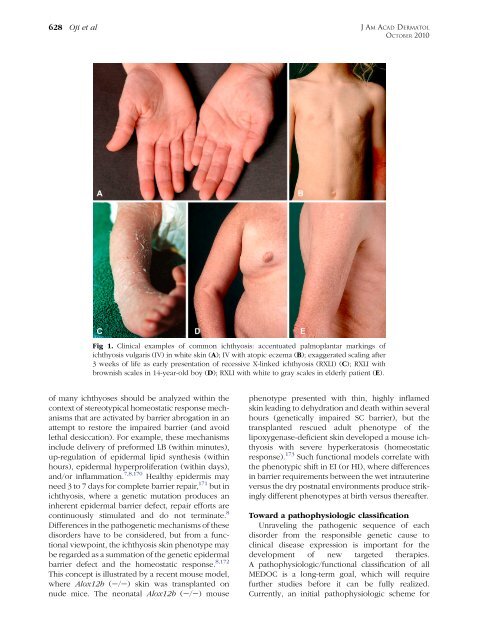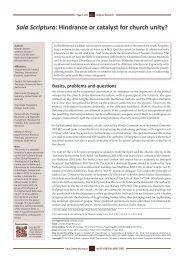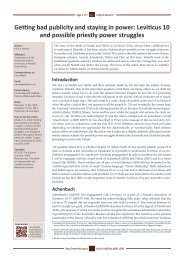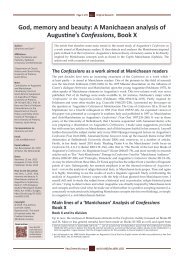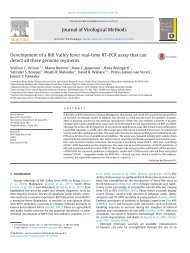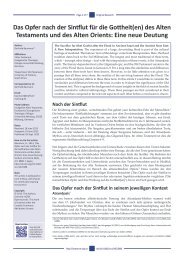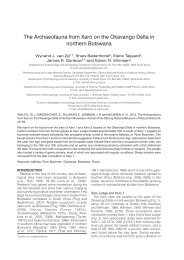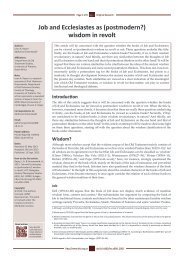Revised nomenclature and classification of inherited ichthyoses ...
Revised nomenclature and classification of inherited ichthyoses ...
Revised nomenclature and classification of inherited ichthyoses ...
Create successful ePaper yourself
Turn your PDF publications into a flip-book with our unique Google optimized e-Paper software.
628 Oji et al<br />
Fig 1. Clinical examples <strong>of</strong> common ichthyosis: accentuated palmoplantar markings <strong>of</strong><br />
ichthyosis vulgaris (IV) in white skin (A); IV with atopic eczema (B); exaggerated scaling after<br />
3 weeks <strong>of</strong> life as early presentation <strong>of</strong> recessive X-linked ichthyosis (RXLI) (C); RXLI with<br />
brownish scales in 14-year-old boy (D); RXLI with white to gray scales in elderly patient (E).<br />
<strong>of</strong> many <strong>ichthyoses</strong> should be analyzed within the<br />
context <strong>of</strong> stereotypical homeostatic response mechanisms<br />
that are activated by barrier abrogation in an<br />
attempt to restore the impaired barrier (<strong>and</strong> avoid<br />
lethal desiccation). For example, these mechanisms<br />
include delivery <strong>of</strong> preformed LB (within minutes),<br />
up-regulation <strong>of</strong> epidermal lipid synthesis (within<br />
hours), epidermal hyperproliferation (within days),<br />
<strong>and</strong>/or inflammation. 7,8,170 Healthy epidermis may<br />
need 3 to 7 days for complete barrier repair, 171 but in<br />
ichthyosis, where a genetic mutation produces an<br />
inherent epidermal barrier defect, repair efforts are<br />
continuously stimulated <strong>and</strong> do not terminate. 8<br />
Differences in the pathogenetic mechanisms <strong>of</strong> these<br />
disorders have to be considered, but from a functional<br />
viewpoint, the ichthyosis skin phenotype may<br />
be regarded as a summation <strong>of</strong> the genetic epidermal<br />
barrier defect <strong>and</strong> the homeostatic response. 8,172<br />
This concept is illustrated by a recent mouse model,<br />
where Alox12b (e/e) skin was transplanted on<br />
nude mice. The neonatal Alox12b (e/e) mouse<br />
JAM ACAD DERMATOL<br />
OCTOBER 2010<br />
phenotype presented with thin, highly inflamed<br />
skin leading to dehydration <strong>and</strong> death within several<br />
hours (genetically impaired SC barrier), but the<br />
transplanted rescued adult phenotype <strong>of</strong> the<br />
lipoxygenase-deficient skin developed a mouse ichthyosis<br />
with severe hyperkeratosis (homeostatic<br />
response). 173 Such functional models correlate with<br />
the phenotypic shift in EI (or HI), where differences<br />
in barrier requirements between the wet intrauterine<br />
versus the dry postnatal environments produce strikingly<br />
different phenotypes at birth versus thereafter.<br />
Toward a pathophysiologic <strong>classification</strong><br />
Unraveling the pathogenic sequence <strong>of</strong> each<br />
disorder from the responsible genetic cause to<br />
clinical disease expression is important for the<br />
development <strong>of</strong> new targeted therapies.<br />
A pathophysiologic/functional <strong>classification</strong> <strong>of</strong> all<br />
MEDOC is a long-term goal, which will require<br />
further studies before it can be fully realized.<br />
Currently, an initial pathophysiologic scheme for


